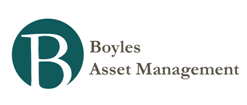Wall Street Aristocracy Got $1.2 Trillion From Fed
Citigroup Inc. (C) and Bank of America Corp. (BAC) were the reigning champions of finance in 2006 as home prices peaked, leading the 10 biggest U.S. banks and brokerage firms to their best year ever with $104 billion of profits.
By 2008, the housing market’s collapse forced those companies to take more than six times as much, $669 billion, in emergency loans from the U.S. Federal Reserve. The loans dwarfed the $160 billion in public bailouts the top 10 got from the U.S. Treasury, yet until now the full amounts have remained secret.
Fed Chairman Ben S. Bernanke’s unprecedented effort to keep the economy from plunging into depression included lending banks and other companies as much as $1.2 trillion of public money, about the same amount U.S. homeowners currently owe on 6.5 million delinquent and foreclosed mortgages. The largest borrower, Morgan Stanley (MS), got as much as $107.3 billion, while Citigroup took $99.5 billion and Bank of America $91.4 billion, according to a Bloomberg News compilation of data obtained through Freedom of Information Act requests, months of litigation and an act of Congress.
“These are all whopping numbers,” said Robert Litan, a former Justice Department official who in the 1990s served on a commission probing the causes of the savings and loan crisis. “You’re talking about the aristocracy of American finance going down the tubes without the federal money.”
Foreign Borrowers
It wasn’t just American finance. Almost half of the Fed’s top 30 borrowers, measured by peak balances, were European firms. They included Edinburgh-based Royal Bank of Scotland Plc, which took $84.5 billion, the most of any non-U.S. lender, and Zurich-based UBS AG (UBSN), which got $77.2 billion. Germany’s Hypo Real Estate Holding AG borrowed $28.7 billion, an average of $21 million for each of its 1,366 employees.
The largest borrowers also included Dexia SA (DEXB), Belgium’s biggest bank by assets, and Societe Generale SA, based in Paris, whose bond-insurance prices have surged in the past month as investors speculated that the spreading sovereign debt crisis in Europe might increase their chances of default.
The $1.2 trillion peak on Dec. 5, 2008 -- the combined outstanding balance under the seven programs tallied by Bloomberg -- was almost three times the size of the U.S. federal budget deficit that year and more than the total earnings of all federally insured banks in the U.S. for the decade through 2010, according to data compiled by Bloomberg.
- Bond Hubris Overwhelms Fed In Riskiest Credit-market Sectors
Bond investors trying to divine when the Federal Reserve will reduce its unprecedented monetary stimulus are increasingly looking to the riskiest parts of the debt market, which are booming like before the financial crisis. The amount of loans made this...
- Buffett Says Banks Cleared Of Excess Risk Pose No Threat To U.s.
Thanks to Will for passing this along. Warren Buffett, the billionaire investor who oversees stakes in some of the largest U.S. banks, said the nation’s lenders have rebuilt capital to the point where they no longer pose a threat to the economy. “The...
- The Death Of The Dollar? – By Rob Arnott
To no one’s surprise, the Fed announced that it will replace the expiring “Operation Twist”—in which it was selling $45 billion of short maturity treasuries and buying a like amount of long maturity treasuries every month—with continued purchases...
- States Steal Federal Foreclosure Funds At Their Own Peril
Found via the Corner of Berkshire & Fairfax. The U.S. housing market is showing tentative signs of life as demand for new homes and housing prices begin to rise in some areas. Yet pitfalls remain, including about 12 million borrowers who still...
- Secret Fed Loans Gave Banks Undisclosed $13b
The Federal Reserve and the big banks fought for more than two years to keep details of the largest bailout in U.S. history a secret. Now, the rest of the world can see what it was missing. The Fed didn’t tell anyone which banks were in trouble so deep...

